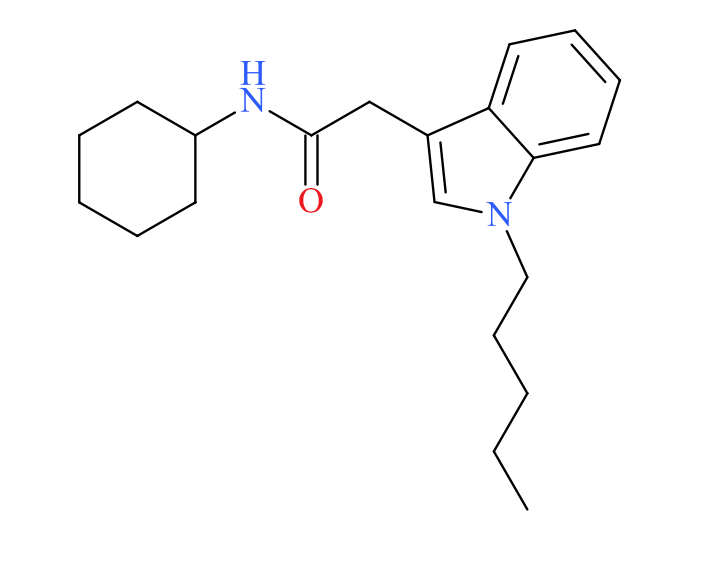CH-PIATA
CH-PIATA is classified as a synthetic cannabinoid. Prior generations of synthetic cannabinoids were reported to cause psychoactive effects similar to delta-9-tetrahydrocannabinol (THC), and caused adverse events, including deaths, as described in the literature. New synthetic cannabinoid subclasses have recently emerged among the recreation drug supply nationally and internationally, seemingly as replacement drugs after a synthetic cannabinoid class-wide ban implemented by China in July 2021 which included most traditional indole carboxamide and indazole carboxamide structural scaffolds. Synthetic cannabinoids of this new generation mostly lack pharmacological and toxicological data in the literature, especially in humans, although some have been studied for medicinal purposes. Scientists at Cayman Chemical and the CFSRE continue to adopt preferred names for these new synthetic cannabinoids based on previously developed and accepted naming conventions (see below). For this drug, “ATA” represents the linker region of the synthetic cannabinoid structure. No data or information are available for CH- PIATA in the literature. Currently, CH-PIATA and the newest generation of synthetic cannabinoids are not scheduled substances in the United States.
- Class:
- Cannabinoid
- Appearance:
- Plant-Like Material
- Formula:
- C21H30N2O
- MW:
- 326.5
- [M+]:
- 326
- [M+H]+:
- 327.2431
- IUPAC:
- N-cyclohexyl-2-(1-pentylindol-3-yl)acetamide
- Report Date:
- April 29, 2022









